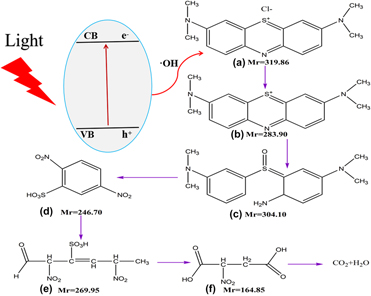Article contents
Inorganic coordination polymer quantum sheets@graphene oxide composite photocatalysts: Performance and mechanism
Published online by Cambridge University Press: 15 July 2019
Abstract

Heterogeneous photocatalytic oxidation technology is currently a technology with the potential to solve environmental pollution and energy shortages. The key to this technology is to find and design efficient photocatalysts. Here, a series of inorganic coordination polymer quantum sheets (ICPQS)@graphene oxide (GO) composite photocatalysts are synthesized by adding GO to the synthesis process of ICPQS: {[CuII(H2O)4][CuI4(CN)6]}n. These composite photocatalysts were characterized by X-ray diffraction, X-ray photoelectron spectroscopy, cyclic voltammetry, scanning electron microscopy, transmission electron microscopy, Zeta potential, and N2 adsorption/desorption isotherms. The photocatalytic degradation of methylene blue showed that the activity of ICPQS@GO composite photocatalysts is better than that of ICPQS. Among ICPQS@GO composite photocatalysts, the 10.6% ICPQS@GO composite photocatalyst has the best activity, which can reach 3.3 mg/(L min) at pH 3. This method of loading low–specific surface area photocatalysts onto GO to improve photocatalytic performance indicates the direction for the synthesis of highly efficient photocatalysts.
- Type
- Article
- Information
- Copyright
- Copyright © Materials Research Society 2019
References
- 5
- Cited by




